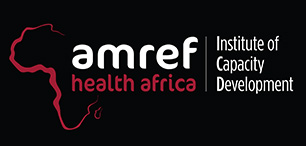
Our Goal
To reduce morbidity and mortality related to non-communicable (diabetes, and asthma) and infectious diseases (pneumonia and diarrhoea)
Our Location
The Counties targeted in this project include: Kakamega, Kilifi, Nairobi and Nyeri with selected sub counties. These sub counties include: Malava, Likuyani and Lurambi in Kakamega, Kaloleni and Kilifi North in Kilifi, Embakasi and Kasarani in Nairobi and Tetu, Mukuruweini and Nyeri Central in Nyeri.
Donor & Collaborating Partners
- Glaxosmithkline
- Ministry of Health
Background
The prevalence of infectious diseases (IDs) are a significant burden to Kenya’s health system and overall prosperity. HIV/AIDs, Tuberculosis (TB), malaria and diarrhoeal diseases are among the leading causes of mortality in Kenya. Pneumonia and diarrhoea combined are the leading causes of mortality for children under-five. Prevalence of diarrheal diseases stands at six percent while pneumonia is responsible for 16 percent of under five deaths. Prevalence of non-communicable diseases (NCDs) is also high. According to the WHO, NCDs account for 27 percent of deaths of Kenyans aged between 30 and 70 years. The prevalence of Type 2 diabetes, elevated blood pressure and asthmatics is significant. With the continuous burden of IDs and the growing incidence of NCDs, Kenya is currently experiencing a double tragedy scenario.
Amplifying the dual burden of IDs and NCDs, Africa faces severe shortages and capacity of human resources for health (HRH) that cannot adequately serve the continent’s health needs. In response, through Kenya’s HRH strategy, the national and county governments in collaboration with partners are working to reinforce HRH to deliver efficient, effective and quality health services.
It is for this reason that Amref Health Africa, in partnership with GSK, will be implementing a two-year project which aims to address these challenges by strengthening the capacity of the health system in Kenya to ensure quality management and control of diarrhoea and pneumonia and, advocacy for NCDs. The project will be implemented in four counties (Kilifi, Nairobi, Nyeri and Kakamega), where Amref Health Africa implemented the NCD project (2015 – 2018). The project runs from 1st June 2018 to 31st May 2020
Specific Objectives
- To build the capacity of frontline health workers to effectively manage and control IDs (pneumonia and diarrhoeal disease)
- To strengthen community health systems to increase public awareness for prevention, early diagnosis, effective management and control of IDs
- To improve the supply chain for increased access to medicines and supplies for IDs and NCDs
- To generate and use evidence for advocacy and to influence action and policy
Major activities/Intervention Areas
Outcome 1: Improved capacity of frontline health workers to effectively manage and control IDs and NCDs.
Activity 1.1: Curriculum review and updating for Pneumonia and Diarrhoea.
Activity 1.2: Train mentors and trainers of trainers (ToTs) on pneumonia and diarrhoea
Activity 1.3: Cascaded Training of frontline workers on screening, diagnosis, management and control of IDs.
Activity 1.4: Support quarterly on job trainings (OJTs) and continuous medical education (CME)
Activity 1.5: Support and conduct bi-annual supportive supervision
Outcome 2: Strengthened community health systems to increase public awareness for prevention, early diagnosis, better management and control of IDs
Activity 2.1: Train Community Health Extension Workers (CHEWs) to promote community practices for prevention and control of IDs
Activity 2.2: Train Community Health Workers (CHWs) to promote community practices for prevention and control of IDs
Activity 2.3: Support community dialogue days, screening and community sensitization for awareness creation.
Activity 2.4: Train women of reproductive age (WRA) on effective management and control of diarrhoea, pneumonia and gestational diabetes
Activity 2.5: Support formation of mother to mother support groups.
Activity 2.6: Conduct bi-annual review meetings with CHEWS and CHVs
Activity 2.7: Printing and dissemination of Job aids and Information, Education and communication (IEC) materials
Outcome 3: Increased access to medicines and supplies for IDs and NCDs
Activity 3.1: Conduct training for health managers on Leadership, management and governance (LMG)
Activity 3.2: Train health workers on Supply Chain Management
Activity 3.3: Support the formation and strengthening of community pharmacies
Outcome 4: Strengthened advocacy and documentation to influence action and policy
Activity 4.1: Advocate for prioritisation and allocation of resources for health and more specifically NCDs
Activity 4.2: Advocate strengthened diagnostic tools and data use for decision making
Activity 4.3: Conduct operations research to influence action and policy.
Activity 4.4: Strengthen/formation of technical working groups (TWGs) and stakeholders’ forums at the national and the county level
Activity 4.5: Support initiation and manage online platforms for county-based advocates to share experiences, approaches and evidence
Activity 4.6: Knowledge management, documentation and communication

